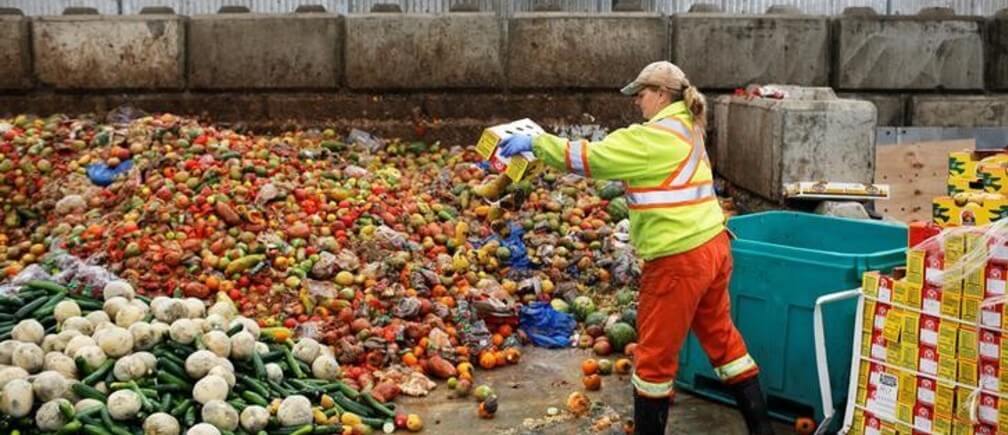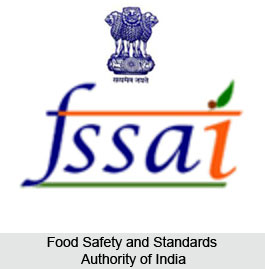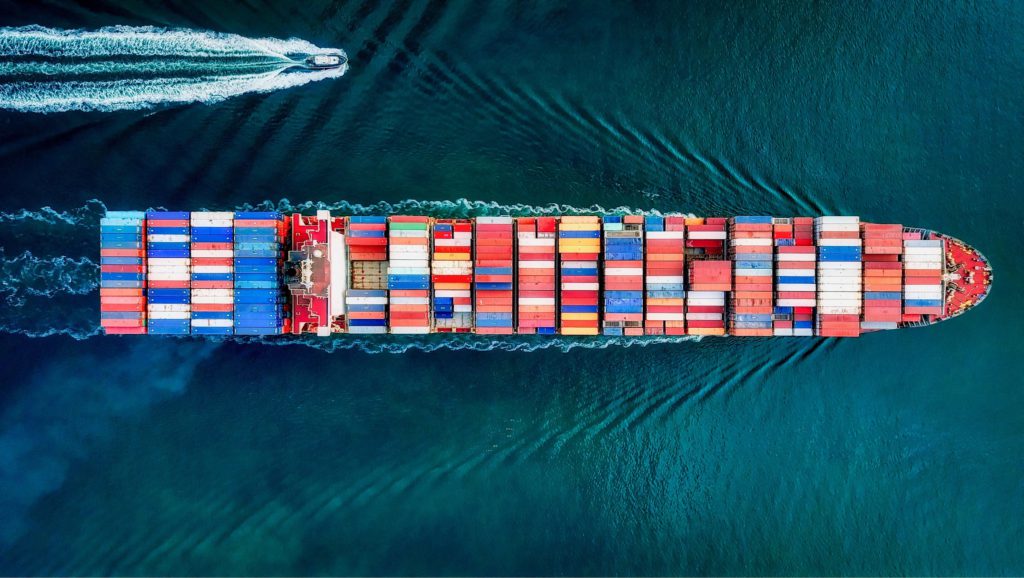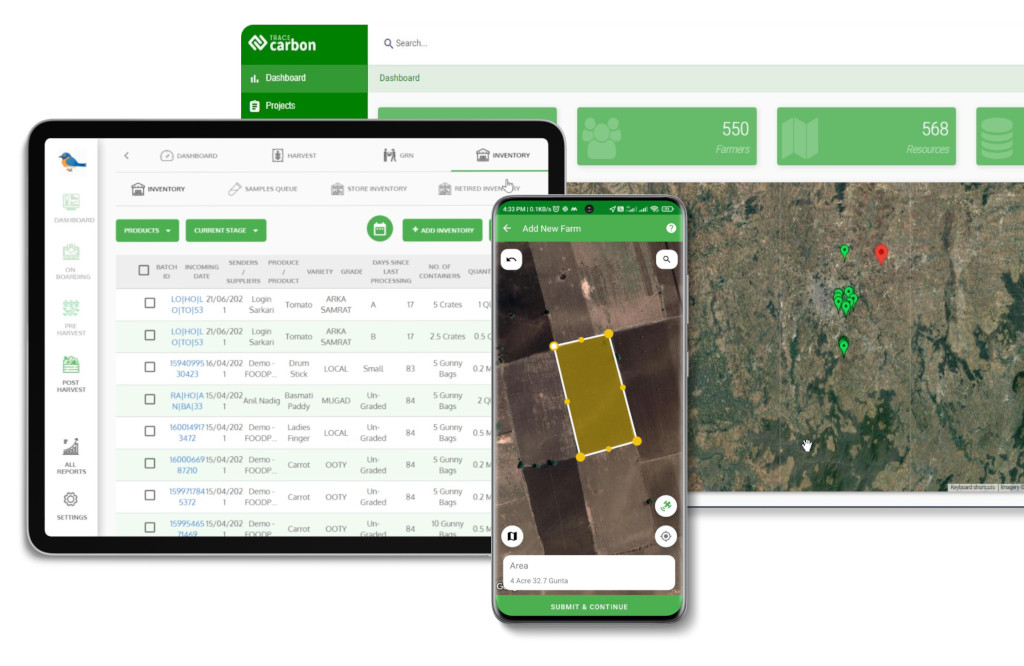Contact: +91 99725 24322 |
Menu
Menu
Quick summary: In order to have a global presence, India’s food supply chain needs to be agile, adaptive, and efficient. Digitization of the food supply chain is inevitable to optimize supply chains. Streamlining of processes, improvements in cold chain infrastructure, and complying with regulatory standards should be able to redefine supply chain management.

The food we eat travels a long complex journey before it reaches our plates. Traversing through the farms, processors, distribution and finally the supermarket shelves, the food goes through a number of stages in the food supply chain. Do we know what goes behind the scenes in this long journey? The food supply chain is opaque, and uncertainties lurk in every corner of the network. In this blog post, let us decode the food supply chain covering the challenges, the revolution that is happening , what are the initiatives taken by the Government and the associated standards available along with the public and private sector approach .
Over the past two decades, there has been rapid growth in the food sector in India. Food production and processing are developing in tandem with the growth in the capital-output ratio. India establishes itself second in worldwide farm exports and first in the net cropped area followed by US and China.
India’s agricultural and processed foods are exported to the broadest ranging 120 countries. India’s agriculture commodities export alone accounted for 3.50 billion US dollars in March-June 2020.
India is the second-largest producer of fruits and vegetables and milk, fifth-largest producer of eggs, and sixth largest producer of fish. The fragmented supply chain along with the lack of adequate cold chain infrastructure leads to inefficiency and losses in the supply chain.
Up to 45% of food produced gets spoilt in the supply chain.
Only a mere 7% of perishable foods are being processed.
The Associated Chambers of Commerce estimates that post-harvest losses cost the country about $14 billion a year.

In order to have a global presence, India’s food supply chain needs to be agile, adaptive, and efficient. However, there are a number of challenges in this complex network with perishable food and a number of small stakeholders with weak links between them. Supply chain inefficiencies have disrupted the food sector.

An efficient Food Supply Chain Ecosystem overcomes these challenges. A basic supply chain ecosystem includes resources, supporting institutions, delivery and infrastructure, and supply chain integration.

There has been a rapid transformation in the food market in India. Retail sales are growing at 49% annually, penetrating both urban and rural markets. The food processing industry is also growing fast to meet the demands of consumers in the urban market. Improvements and advances in the logistics sector have also seen the emergence of wholesale markets.
This revolution has been primarily driven by factors like technology advancements, consumer behaviour and government policies. The development of new digital platforms connecting the farmers with consumers have allowed farmers to sell their produce online, eliminating middlemen ad reducing cost of distribution.
There has been also a growing demand of quality and nutritious food from the consumers. Conscious consumerism is on the rise with consumers willing to pay more for organic and sustainably produced food. This has led to the growth of new markets for the producers.
Government policies has also played a role in transformation of India’s food supply chain. The initiatives include sustainable agriculture practices, establishment of cold storage facilities and promotion of Farmer Producer organizations(What are Farmer Producer Organizations?
100 % FDI is allowed in the food processing sector and incentives are offered to set up processing plants in Agri-Export zones or outside them.
A strong retail market should provide the necessary fillip to the agriculture and processing industry.

India’s food processing sector is one of the largest in the world and such big sectors would need major support from the government.
The Indian Government has been formulating policies and measures regarding the same. Some of the few are as follows,
These are a few of the initiatives:
There are many more schemes like Operation Green, PM Formalization of Micro Food processing Enterprises (PMFME), Production-linked incentive (PLI)

Standardization is a powerful tool in achieving Supply Chain efficiency.
Interoperability of systems and compatibility to standards help supply chain partners to increase production efficiency and reduce costs.
There are standards related to both food safety and logistics and IT systems. Compliance with international food standards is mandatory in the global food market.
The food industry across the world is fragile. India is no different, with huge markets and volumes in production it becomes difficult to maintain standards of quality and hygiene, hence many regulatory bodies monitor exports and imports in India. One such is the Agricultural and Processed Food Products Export Development Authority (APEDA).
APEDA manages export promotion and development of 14 agricultural and processed food products listed in its schedule. It has set up 5 regional offices in Bangalore, Hyderabad, Kolkata, Guwhati, and Mumbai and 13 virtual offices across the country. Helps in developing markets and infrastructure, promotes quality in exports, financial support, and transport assistance.

Globalization in the food industry has forced players in the organization to move into the production of non-traditional agricultural products to diversify and increase foreign exchange. India has a certain geographical advantage in terms of producing certain fruits and vegetables which have high value in the export market. Food safety has become the topmost priority. With an increase in demand for safer products, protocols regarding packing, operating, traceability, pesticide use, technology measuring contamination have also increased.
Demand in volume increases the need for private and public sectors to work together. An efficient supply chain would require both these players to adhere to their roles precisely.

The Way ahead
India has the cultivable land, the seasons needed for the production of fruits and vegetables, and a well-developed agri-business system. The gap that exists is between the farm and the consumer level and the road it travels through passing different hands, decreasing the food quality and increasing the costs and wastages.
In order to make India the food basket of the world, there is a necessity for technological intervention. Digitization of the food supply chain is inevitable to optimize supply chains. Streamlining of processes, improvements in cold chain infrastructure, complying with regulatory standards should be able to redefine supply chain management.
The use of technology is crucial in shaping food markets as it increases productivity and diversity of agriculture products. This results in reduced food waste. Regions with weak markets are at a disadvantage as they depend on a few food varieties whose yields can be affected by climate changes, leading to food insecurity. Large retailers have the resources to adopt advanced technologies, improve productivity and reduce costs. Digitization of food supply chain benefits all the stakeholders in the supply chain.
TraceX’s end to end blockchain traceability solutions enables supply chain transparency and management, thereby building a robust food supply chain. Leveraging the blockchain technology, the product helps to bring in tracking of sustainable practices with efficient farm and crop management. It also drives supply chain optimization and stakeholder collaboration. This builds trust in the ecosystem and ensures the end consumer a safe and a healthy product.
The food supply chain needs to be looked from an holistic angle to understand the system better and identify potential areas of improvement. Decoding the food supply chain improves the visibility , increases efficiency, reduces costs and builds resilience in the event of disruptions. It enables companies to understand their operations and plan for future strategies and actions.
As India’s food supply chain continues to evolve and improve, it is important that they are sustainable and socially equitable, benefitting all the stakeholders in the network.

Blockchain-powered traceability solutions provide the necessary edge in building robust and resilient supply chains.
Read how Traceability is transforming Agriculture and Food Supply Chains.
